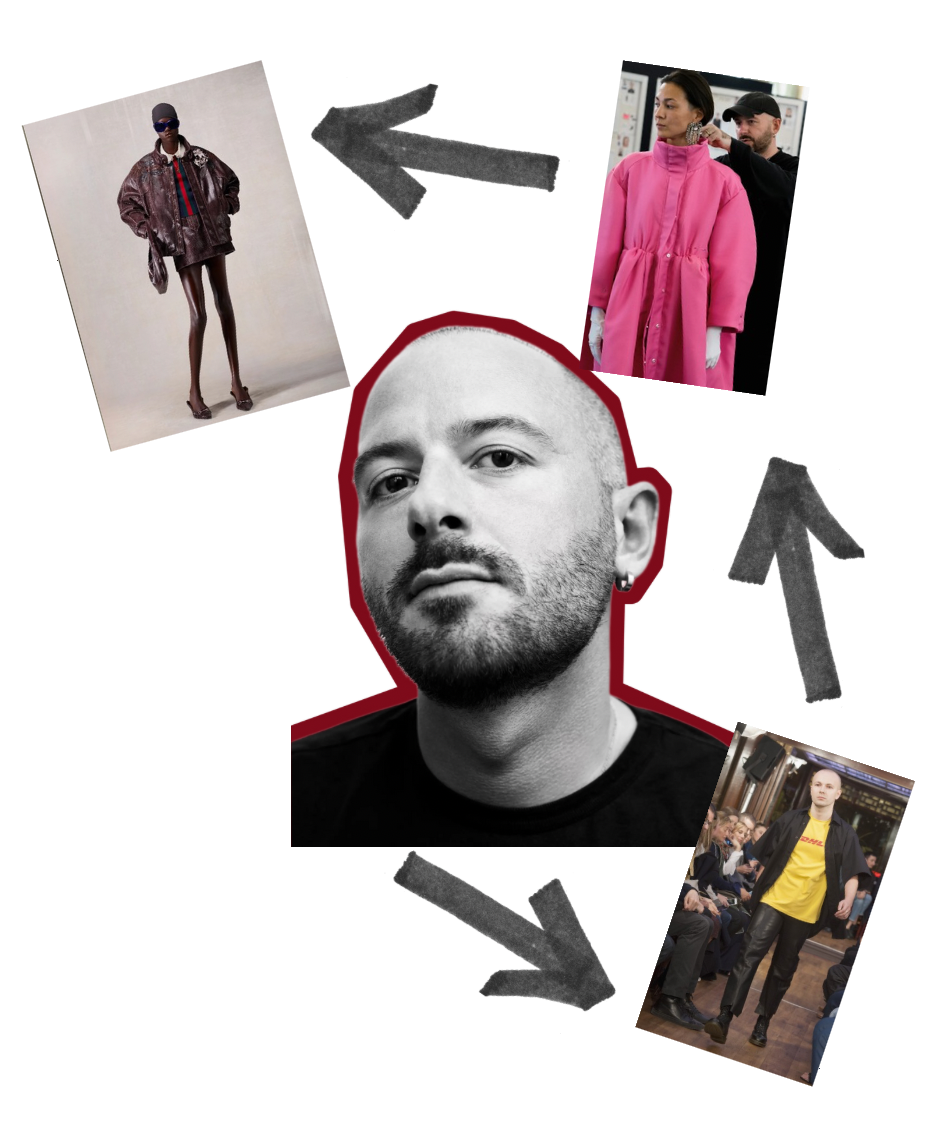It’s funny how life happens and pulls you out of sync with the only real things that make you feel alive. Someone out there might say, if you let it pull you away, maybe you never loved it at all. I disagree.
A big part of studying to be a designer is studying the craft of other designers, art history, and every kind of textile content or manipulation technique. And then it stops. You start working and your whole world turns technical: tech packs, button sizes (measured in lignes), and reviewing denim wash panels submitted on the floor (this one’s moderately dark, slightly red, please reduce 30% and resubmit). I would crawl back to my desk to do the least creative tasks within what should be the most creative field.
I was young, and feeling deflated by the unglamorous grind was really just a sign of immaturity…views I don’t hold anymore, but I do remember it clearly. The work of design moves fast for a young designer just trying to live, eat, maybe party or date after hours and still prep trend research for the next concept meeting.
That was my world in corporate design. At some point, my love for fashion ie for watching shows in awe got tangled up in watching shows for “key details” to feed the next season, or to clip and submit to my design director as inspiration. I lost that spunk, that drive, that thing. It was the classic case of the cobbler with no shoes, or the hairdresser who never has time to curl her own hair.
Now I work for a designer brand in a design-adjacent role. Creative, yes, but in a different way. Still about the customer. Still fulfilling. But I want to fall in love with fashion again…as art, as meaning. And I want to take you with me.
Enter Demna
From what I’ve known about Demna aka the previous head of Balenciaga and, before that, founder of Vetements is that he’s disruptive. He knows what’s going on in the world and cares about it, but he’s going to spin it with all his might because he really doesn’t give a damn.
And that’s the paradox: how can someone leading a house worth billions (Gucci’s parent company Kering was recently valued at over $50 billion) not care? He doesn’t care what you think. That’s why his design works.
I’ve been watching his work for years. Not always wearing it (or being able to fit it and often times afford it) outside of a shoe, a hoodie, or an accessory, and maybe that won’t change now that he’s at Gucci. But here’s why it could.
Yesterday marked his first collection at the house, and the short dropped today. If you know what I know, the whole industry just shifted. Not just because of him but because of this whole hokey pokey dance of designers moving around the board game of luxury. Think of a Monopoly board flipping…you don’t land where you expected, but suddenly the rules of the game are different but also still very much the same. That’s what Demna does: he changes the way everyone else has to play.
The Drop
Instead of a runway, he released a lookbook of 37 portraits, shot by Catherine Opie — a Los Angeles fine-art photographer, originally from Ohio, whose work has always centered identity and community.
Each image was a character in Demna’s new “family”:
L’Influencer — in textured brown crocodile leather.
La Bomba No. 2 (“the bomb”) — draped in the finest fur. Joanne the Scammer would be jealous.
La Contessa (“the countess”) — my favorite, in rich florals and leg-of-mutton sleeves. Modest, historical, yet modern.
L’Ereditiera (“the heiress”) — in a signature Gucci pussy-bow dress in deep oxblood.
The It Girl — in a feathered, sheer, monogrammed maxi gown with hand bag.
La VIC — in GG monogram head to toe.
Il Narcisista (“the narcissist”) — shirt unbuttoned down to his belt, a direct nod to Tom Ford’s Gucci in the ’90s.)
It felt less like a collection preview, more like a family album. An amuse-bouche so to speak, for the main event. Oh and Gucci heritage codes were all there… the trunks, bamboo handles, Flora prints…but reframed with his cynical eye.
What It Looked Like
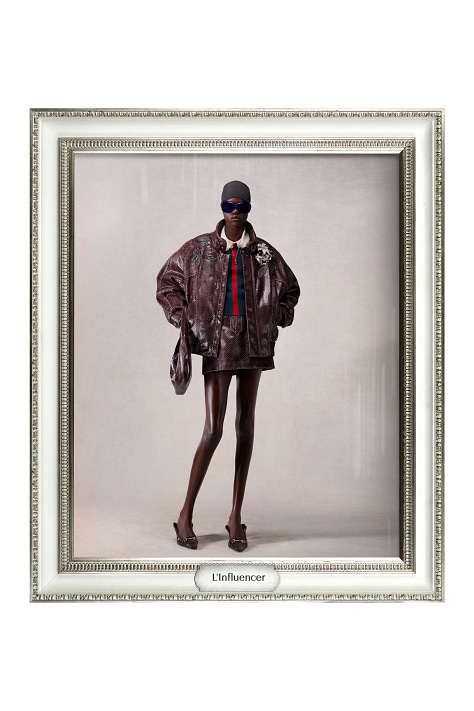
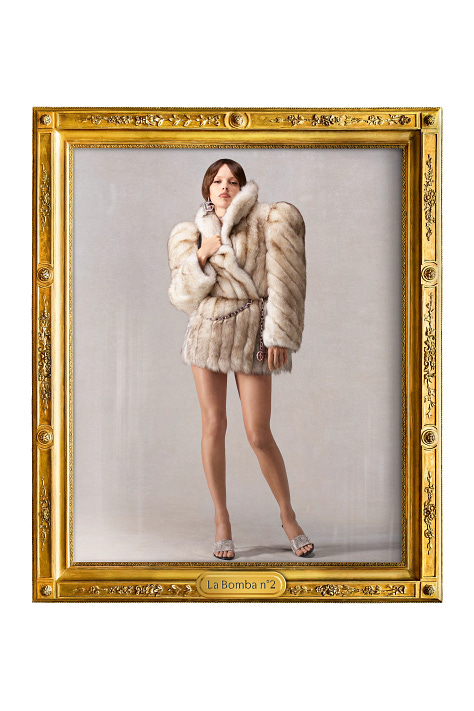
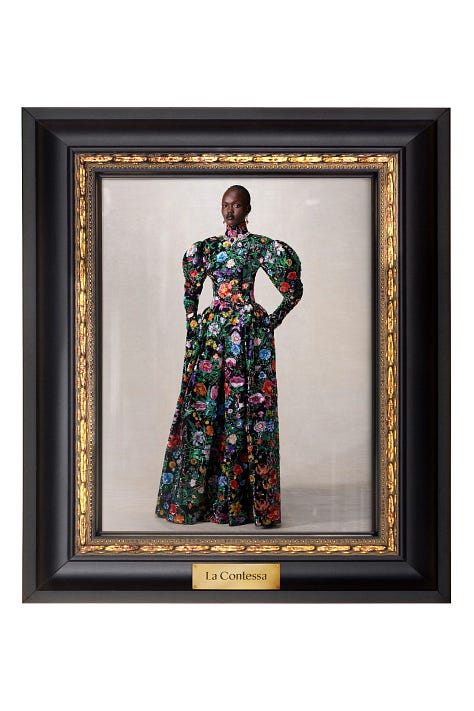
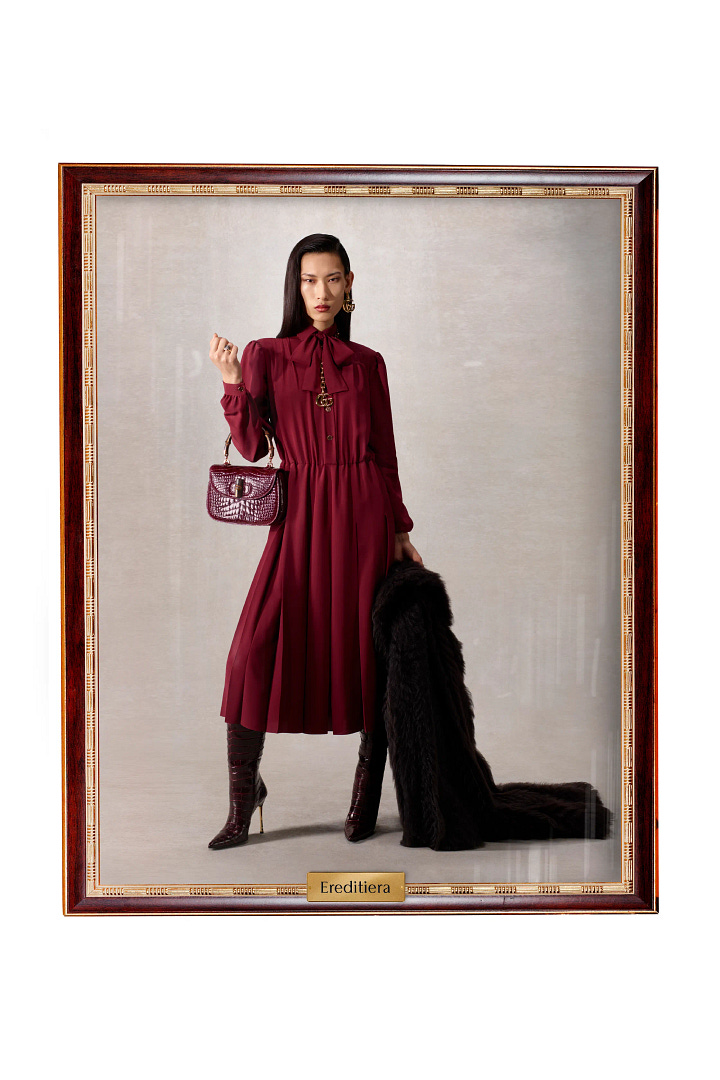
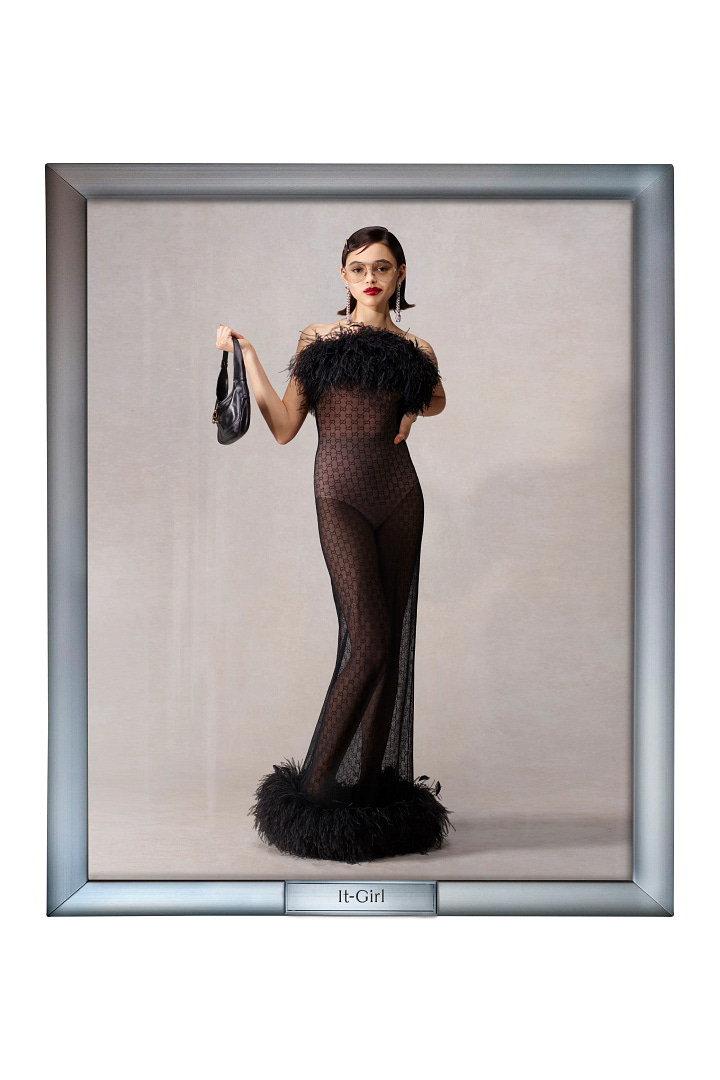
Pieces: 37, spanning womenswear and menswear archetypes
Color story: Gucci reds, forest greens, browns, black, metallics
Mood: irony meets intimacy, heritage meets disruption
And yes, I can already see this palette working in my own closet — forest green track pants, croc flat boots from Tibi 2 collections back, rich faux fur paired back to texture on texture on texutre. Oh and also my pajama pants with the fur at the hem. More is more here. And while I like the concept of irony, . It doesn’t take Gucci money to get the Gucci mood.
If You’re Shopping (or Not)
If you’re buying into this collection, you’re buying into history: the very first chapter of Demna’s Gucci. If not, you can still catch the feeling:
Go for deep heritage tones (camel, burgundy, forest).
Add one shine element (metallic shoe, sequined scarf).
Use a heritage punctuation (belt, loafer, headscarf).
Let monogram = texture, not trophy.
This isn’t about logos — it’s about learning the grammar.
A Bit of History (so you’re fluent)
Demna was born in Georgia (the country) in 1981. He studied economics before switching to fashion, graduating from the Royal Academy of Fine Arts Antwerp in 2006 (the same school that produced the Antwerp Six). He worked at Maison Margiela and Louis Vuitton, then co-founded Vetements in 2014, shaking Paris with deconstructed streetwear and raw, outsider energy.
By 2015, Balenciaga, one of the most historic couture houses in Paris handed him the keys. For a decade, he made it impossible to ignore, fusing irony with commerce and putting sneakers, memes, and oversized tailoring at the center of luxury.
Now, Gucci. Which means a new chapter not just for him, but for the industry.
My Takeaway
Fashion history shifts in chapters, not pages. Demna’s La Famiglia isn’t the full story yet, it’s the opening paragraph. Respectful of Gucci’s past, playful in its present, and a setup for what’s next. This Tiger Short has me shook and excited to turn these pages.
If you’re watching from the front row or from your couch with a scarf or bonnet tied just so, the point is the same: this is the start of something. The bigger question is: who’s buying it? And when they do, will they treat it as precious or make it work just as hard for the money as Demna’s Balenciaga and Vetements once did?

